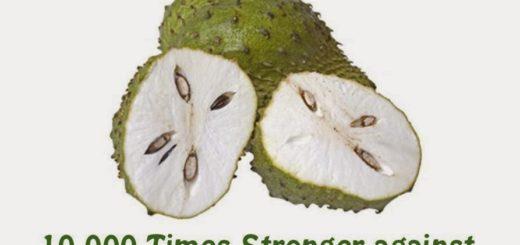QUICK CHART FOR PAIN RELIEF COURTESY OF DR. MERCOLA
| Medical cannabis | Medical cannabis has a long history as a natural analgesic17 At present, 20 U.S. states have legalized cannabis for medical purposes.
Its medicinal qualities are due to high amounts (about 10 to 20 percent) of cannabidiol (CBD), medicinal terpenes, and flavonoids. As discussed in this previous article, varieties of cannabis exist that are very low in tetrahydrocannabinol (THC) — the psychoactive component of marijuana that makes you feel “stoned” — and high in medicinal CBD. The Journal of Pain,18 a publication by the American Pain Society, has a long list of studies on the pain-relieving effects of cannabis and would certainly seem worth the effort for anyone with chronic pain to utilize. Just be sure to seek out a knowledgeable cannabis physician, as many have no idea of the proper dosing. If you are seriously considering medical cannabis for pain, it is imperative that you view my interview with Dr. Allan Frankel in this previous article, who is one of the leading medical cannabis physicians in the U.S. He can do consultations on the phone if you need specific questions answered. |
| Eat real food, and eliminate or radically reduce processed foods | Avoiding processed grains and refined sugars (particularly fructose) will lower your insulin and leptin levels and decrease insulin and leptin resistance, which is one of the most important reasons why inflammatory prostaglandins are produced.
That is why stopping sugar and sweets is so important to controlling your pain and other types of chronic illnesses. |
| Take a high-quality, animal-based omega-3 fat | My personal favorite is krill oil. Omega-3 fats are precursors to mediators of inflammation called prostaglandins. (In fact, that is how anti-inflammatory painkillers work, they manipulate prostaglandins.) |
| Optimize your vitamin D level | Optimizing your vitamin D level by getting regular, appropriate sun exposure and taking a vitamin D3 supplement can help reduce pain via a variety of different mechanisms. |
| Emotional Freedom Techniques (EFT) | EFT is a drug-free approach for pain management of all kinds. It borrows from the principles of acupuncture, in that it helps you balance out your subtle energy system.
It helps resolve underlying, often subconscious, negative emotions that may be exacerbating your physical pain. By stimulating (tapping) well-established acupuncture points with your fingertips, you rebalance your energy system, which tends to dissipate pain. |
| K-Laser Class 4 Laser Therapy | K-Laser therapy can be an excellent choice for many painful conditions, including acute injuries. By addressing the underlying cause of the pain, you will no longer need to rely on painkillers.
K-Laser is a class 4 infrared laser therapy treatment that helps reduce pain, reduce inflammation, and enhance tissue healing — both in hard and soft tissues, including muscles, ligaments, or even bones. The infrared wavelengths used in the K-Laser allow for targeting specific areas of your body, and can penetrate deeply into the body to reach areas such as your spine and hip. For more information about this groundbreaking technology, and how it can help heal chronic pain, please listen to my previous interview with Dr. Harrington. |
| Avoid sitting down | One of the most common causes of pain is low back pain. Even I struggled with it for many years.
The only thing that eliminated it, yes entirely 100 percent gone, was radically reducing the number of hours of sitting from 15 hours a day to less than one. |
| Chiropractic | Many studies have confirmed that chiropractic management is much safer and less expensive than allopathic medical treatments, especially when used for back pain.
Qualified chiropractic, osteopathic, and naturopathic physicians are reliable, as they have received extensive training in the management of musculoskeletal disorders during their course of graduate healthcare training, which lasts between four to six years. These health experts have comprehensive training in musculoskeletal management. |
| Acupuncture | Research has discovered a “clear and robust” effect of acupuncture in the treatment of: back, neck and shoulder pain, osteoarthritis, and headaches. |
| Physical therapy and massage therapy | Both have been shown to be effective for painful conditions such as torn cartilage and arthritis. |
| Astaxanthin | Astaxanthin is one of the most effective fat-soluble antioxidants known. It has very potent anti-inflammatory properties, and in many cases works far more effectively than anti-inflammatory drugs.
Higher doses are typically required and you may need 8 mg or more per day to achieve this benefit. |
| Ginger | This herb has potent anti-inflammatory activity and offers pain relief and stomach-settling properties. Fresh ginger works well steeped in boiling water as a tea or grated into vegetable juice. |
| Curcumin | In a study of osteoarthritis patients, those who added 200 mg of curcumin a day to their treatment plan had reduced pain and increased mobility.
A past study also found that a turmeric extract composed of curcuminoids blocked inflammatory pathways, effectively preventing the overproduction of a protein that triggers swelling and pain.19 |
| Boswellia | Also known as boswellin or “Indian frankincense,” this herb contains specific active anti-inflammatory ingredients.
This is one of my personal favorites as I have seen it work well with many rheumatoid arthritis patients. |
| Bromelain | This enzyme, found in pineapples, is a natural anti-inflammatory. It can be taken in supplement form but eating fresh pineapple, including some of the bromelain-rich stem, may also be helpful. |
| Cetyl Myristoleate (CMO) | This oil, found in fish and dairy butter, acts as a “joint lubricant” and an anti-inflammatory.
I have used this for myself to relieve ganglion cysts and a mild annoying carpal tunnel syndrome that pops up when I type too much on non-ergonomic keyboards. I used a topical preparation for this. |
| Evening Primrose, Black Currant and Borage Oils | These contain the essential fatty acid gamma linolenic acid (GLA), which is useful for treating arthritic pain. |
| Cayenne Cream | Also called capsaicin cream, this spice comes from dried hot peppers. It alleviates pain by depleting the body’s supply of substance P, a chemical component of nerve cells that transmits pain signals to your brain. |
| Mind-body techniques | Methods such as Foundation Training, massage, hot and cold packs, and other mind-body techniques can also result in astonishing pain relief without drugs. |
| Grounding | Grounding, or walking barefoot on the earth, may also provide a certain measure of pain relief by combating inflammation. |













